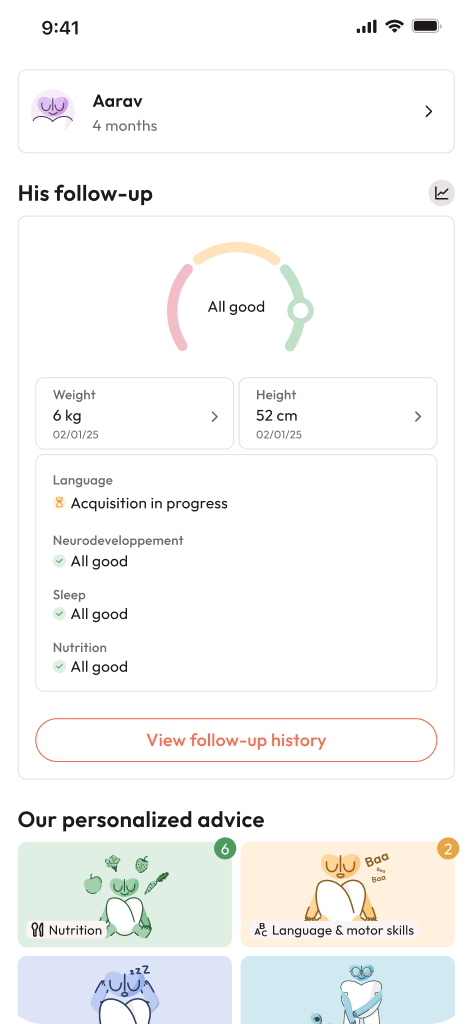Experiencing tingling or numbness in your hands while expecting a baby can feel both unsettling and oddly commonplace. The sensation may sneak in at night, trailing up your wrist like a silent current, or it may flicker as you attempt something simple—buttoning your kurta or picking up a glass of water. If your fingers seem clumsy or quick to tire, carpal tunnel syndrome during pregnancy might be at play—a condition woven into the fabric of pregnancy for many. Parents—often in the bustling act of preparing for a little one—frequently wonder why these symptoms appear and, above all, whether relief is possible. This in-depth exploration puts the spotlight on why carpal tunnel syndrome during pregnancy tends to surface, how it shapes daily routines, and practical steps—ranging from gentle home strategies to medical options—that can restore confidence and comfort in hand movements. Support and clear answers are available; let’s unravel them together.
What is Carpal Tunnel Syndrome During Pregnancy?
Imagine a slender tunnel nestled in your wrist—the carpal tunnel—where the median nerve, ever so vital, slips through alongside tendons controlling your fingers. Carpal tunnel syndrome during pregnancy unfolds when swelling traps the median nerve, much like a crowded train squeezing its passengers. The swelling is often the handiwork of hormonal surges (think estrogen, relaxin, progesterone), fluid retention, and a natural tendency for tissues to become spongier. These changes, unique to pregnancy, elevate the pressure inside the wrist, giving rise to pins-and-needles, inexplicable numbness, and, sometimes, a throbbing discomfort that may climb towards the forearm.
You might ask: why now? The answer lies in a cocktail of biological shifts—all working tirelessly to nurture the baby, but sometimes inadvertently crowding the nerves in your hands. Not everyone experiences it, but for some, carpal tunnel syndrome during pregnancy is an unmistakable companion.
How Common Is Carpal Tunnel Syndrome During Pregnancy?
Here’s a statistic that may surprise: up to 62% of pregnant women encounter symptoms of carpal tunnel syndrome during pregnancy, particularly as the third trimester unfolds and the body stores more fluid. While some may start to notice mild tingling in the second trimester, the climax typically arrives when overall swelling peaks—a ripple effect of both rising hormones and the growing uterus, which even influences blood circulation in remote regions like the wrists and fingers. This condition, although frequent, differs in intensity for every individual, with half of the affected women experiencing tingling in both hands simultaneously.
Recognizing the Symptoms: Tingling, Numbness, and Loss of Dexterity
Perhaps you wake up at night, startled by a fizzing sensation in your fingertips, or find yourself fumbling with tiny buttons or a spoon. Classic symptoms bloom in the thumb, index, middle, and part of the ring finger—territory governed by the median nerve. Pain, burning, and stabbing electric shocks may erupt, and often, the hand feels swollen, even if it looks unchanged.
Night-time strikes are common, owing to the way fluid redistributes when lying down. Weakness in grip, dropping objects unexpectedly, or clumsiness during simple tasks is frequent—and, unsurprisingly, morale can take a hit when everyday chores feel more complicated. Parents who rely heavily on their hands—whether for work, childcare, or household routines—may find themselves frustrated by a condition with such unpredictable timing.
What Causes Carpal Tunnel Syndrome During Pregnancy?
Swelling and Hormonal Changes
The engines powering carpal tunnel syndrome during pregnancy run primarily on hormones. High levels of estrogen, relaxin, progesterone—all instrumental for a healthy pregnancy—soften ligaments and encourage the body to retain water. This increased fluid, however, seeks the path of least resistance, settling in narrow passageways like the carpal tunnel.
Weight Gain and Blood Circulation
Natural weight gain and an elevated blood volume, essential for supporting the growing baby, both contribute to swelling in peripheral tissues. Sometimes, the expanding uterus can even change how blood flows back from the hands, making swelling in the wrist worse than before.
Repetitive Motions and Genetics
Even outside pregnancy, certain actions—prolonged typing, frequent use of mobile phones, sewing, chopping vegetables, or repetitive cleaning—push the wrist into positions that multiply pressure on the nerve. If a parent has a naturally smaller carpal tunnel (often inherited), the risk climbs higher, and any small irritation becomes noticeable. Conditions like gestational diabetes, hypertension, or existing thyroid imbalance are known to amplify swelling and, thus, the tendency for carpal tunnel syndrome during pregnancy.
Diagnosing Carpal Tunnel Syndrome During Pregnancy
The journey often begins with a story: “My hands tingle”, “I wake up unable to feel my fingers”, or “Everyday tasks are slipping from my grip.” Physicians look for classic signs—testing hand strength, tapping the wrist for Tinel’s sign (eliciting tingling), or asking you to flex your wrists (the Phalen’s maneuver). Sometimes, a safe wrist ultrasound or a nerve conduction study is suggested, especially if hand function is seriously affected, or there’s doubt about the diagnosis. While these tests can sound intimidating, they’re designed to be both safe and reassuring during pregnancy.
A gentle reminder: symptoms that persist, worsen, or interrupt sleep repeatedly deserve prompt attention from a healthcare provider.
Impact on Everyday Life
Picture the ordinary act of feeding your child, fastening a bangle, or preparing chapati dough—now, think of hands that no longer respond with their old ease. For many, the psychological effect is just as real; disturbed sleep, constant fatigue, and the fear that “something is wrong” can gnaw at confidence. Parents may feel guilty about asking for help or slowing down, especially when looking after other children or juggling work. The good news? Most cases fade away within weeks after delivery, but until then, small changes can make daily life smoother.
Strategies for Relief: Safe Management and Home Remedies
Wrist Splints and Night Bracing
Slipping on a soft wrist splint before bed positions the hand neutrally, “reclaiming space” for the median nerve and reducing night symptoms. Many people report improved sleep and less tingling by morning. Splints can also be worn during the day if symptoms flare during tasks like typing or cooking.
Gentle Massage and Physiotherapy
Light massages and targeted hand exercises enhance blood flow and lymph drainage, soothing tense muscles. Physiotherapists may guide you through tailored stretches: slow wrist shakes, finger open-close cycles, or moving the hand in gentle circles. Any exercise routine should feel comfortable, not forced.
Ergonomic Adjustments and Activity Modification
A little repositioning goes a long way—supporting wrists on soft pillows at night, choosing lightweight cooking tools, or placing a rolled towel under your forearm during breastfeeding significantly reduces strain. If repetitive tasks are unavoidable, sprinkle breaks throughout the day and alternate hands whenever possible.
Cold Therapy and Swelling Management
A cool cloth or ice pack—never directly on the skin, always wrapped—dulls local swelling. Elevating hands above heart level, using compression gloves, and consuming a balanced, low-salt diet with regular hydration all help keep swelling in check. Sometimes, even a brisk evening walk or a few gentle swimming laps improve circulation and comfort.
Medications and Medical Treatments
Acetaminophen remains a popular and generally safe option for short-term pain relief; however, medical guidance is always mandatory before starting. Strong anti-inflammatories or steroid injections are rare, reserved for persistent, disabling cases after careful risk assessment.
Surgery: A Last Resort
Surgical decompression is rarely performed during pregnancy and only when nerve function is at serious risk. The procedure is local, brief, and considered only after exploring every other supportive measure.
Postpartum Prognosis: What Happens After Delivery?
Relief is remarkably common within four to six weeks after childbirth, as hormones reset and fluid vanishes. For a few, mild tingling may linger, but permanent problems are rare. Nonetheless, if symptoms continue more than three months postpartum, especially if weakness or muscle wasting set in, a specialist’s opinion becomes essential for full recovery.
Preventive Measures: Simple Habits, Big Impact
- Practise gentle prenatal yoga or swimming to keep circulation smooth.
- Elevate hands during rest and use ergonomic supports at home and work.
- Hydrate well, focusing on water-rich fruits and a diet light on salt.
- Respond early to tingling by incorporating rest, splinting, and healthier routines, rather than ignoring the warning signs.
Key Takeaways
- Carpal tunnel syndrome during pregnancy is extremely common, especially in the third trimester when swelling peaks and hand nerves get crowded.
- Main symptoms: tingling, numbness, burning, loss of grip, and discomfort at night.
- Drivers range from hormonal shifts and fluid retention to repetitive hand motions and genetic factors.
- Most people experience full relief after delivery, though some may see recurrences—especially with repetitive wrist use or future pregnancies.
- Early attention—wrist splints, physical therapy, ergonomic adjustments, and lifestyle tweaks—restores comfort without unnecessary stress.
- Medical evaluation ensures the right strategy; prompt action prevents lasting issues.
- Emotional challenges deserve as much care as physical symptoms—seek encouragement, join digital support systems, and maintain hope for improvement.
- For tailored advice, tracking tools, and free health checklists for children, download the application Heloa for personalised support—every step matters when empowering yourself and your family.
Questions Parents Ask
Can carpal tunnel syndrome during pregnancy affect breastfeeding or early baby care?
Many parents wonder if these strange hand sensations might interfere with those all-important first days. While carpal tunnel syndrome during pregnancy can bring discomfort, most find they can comfortably nurse and care for their newborns. Sometimes, holding a baby or managing bottles feels easier with soft pillows for support or slightly lighter utensils. Simple stretches or night splints can give welcomed relief, and, most often, symptoms quickly fade after the baby arrives.
Are there natural remedies or daily changes to help with carpal tunnel syndrome during pregnancy?
Gentle strategies often create the most noticeable relief. Think of elevating your hands when possible, keeping yourself hydrated, and steering clear of high-salt foods to reduce swelling. Compression gloves can ease the sensation, while gentle hand rests every hour or so reset the nerves. A cool compress or soft massage brings relaxation, especially after repetitive tasks. And of course, every parent can tailor their home routines to feel more comfortable—don’t hesitate to ask for options that fit your lifestyle.
Does carpal tunnel syndrome during pregnancy often come back in future pregnancies?
A question on many minds—if these symptoms occurred during one pregnancy, is a repeat likely? Sometimes, yes, especially if hormonal fluctuations or swelling return with another pregnancy. The difference is early awareness—a parent who has felt these symptoms before often recognises the very first warning signs and pivots quickly with wrist support, exercise, and professional advice. Simple adaptations often keep discomfort at bay the next time around.









